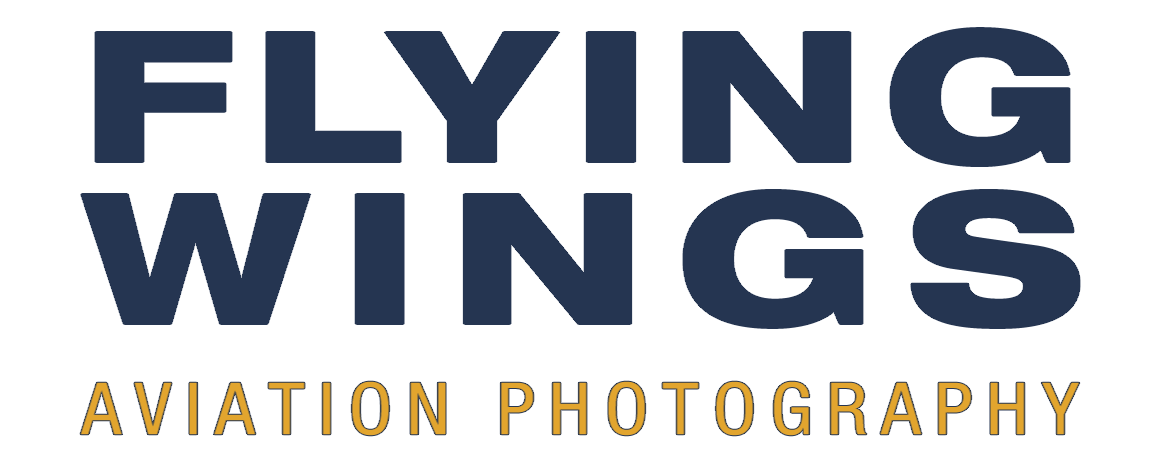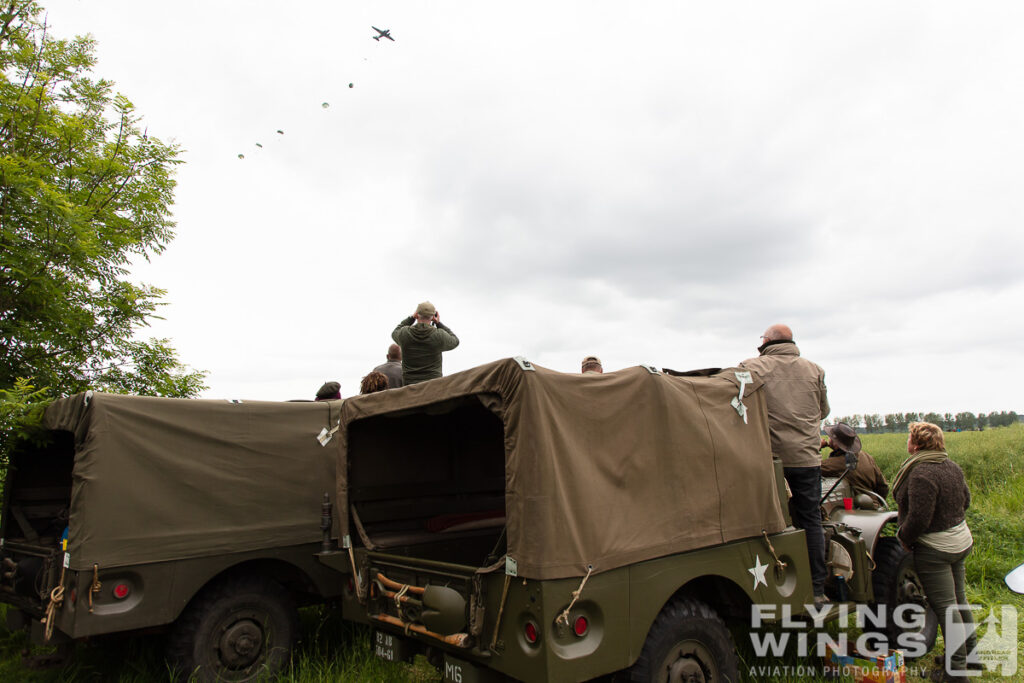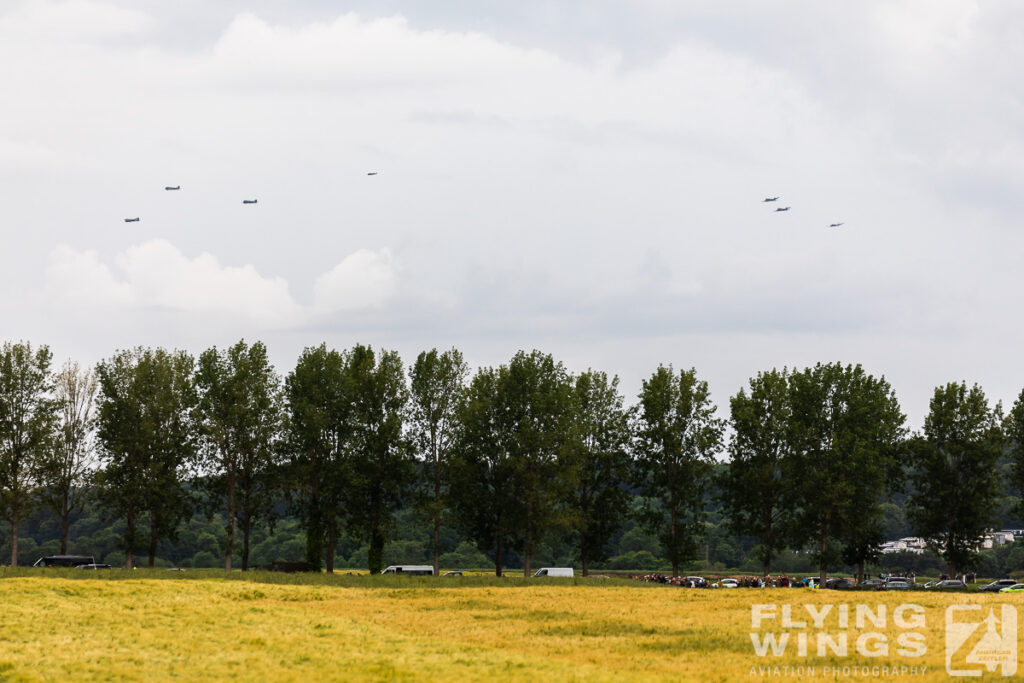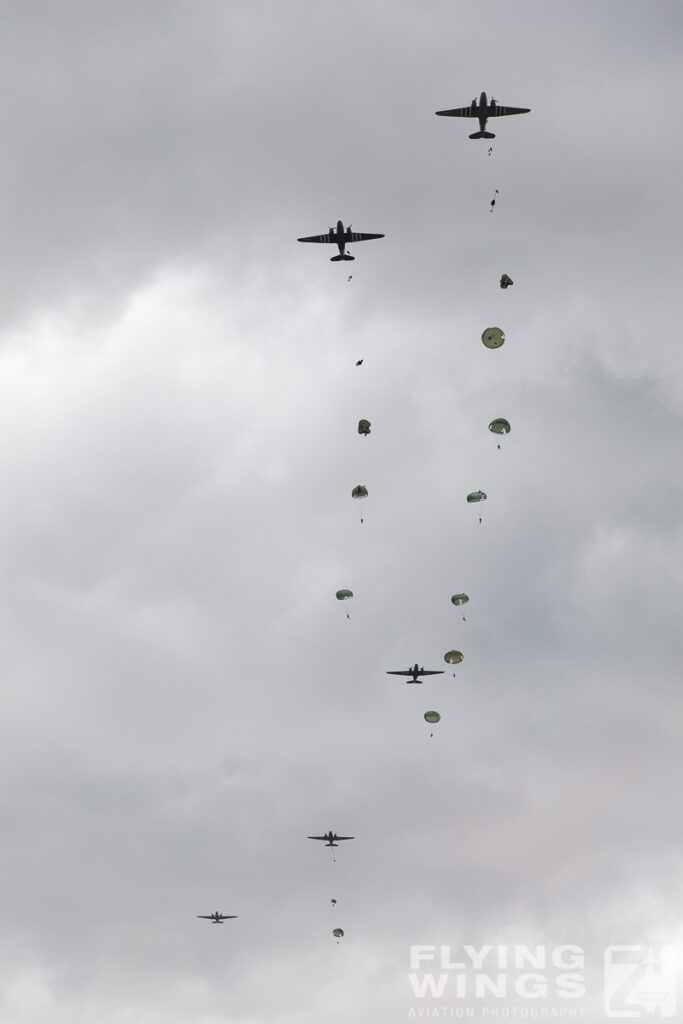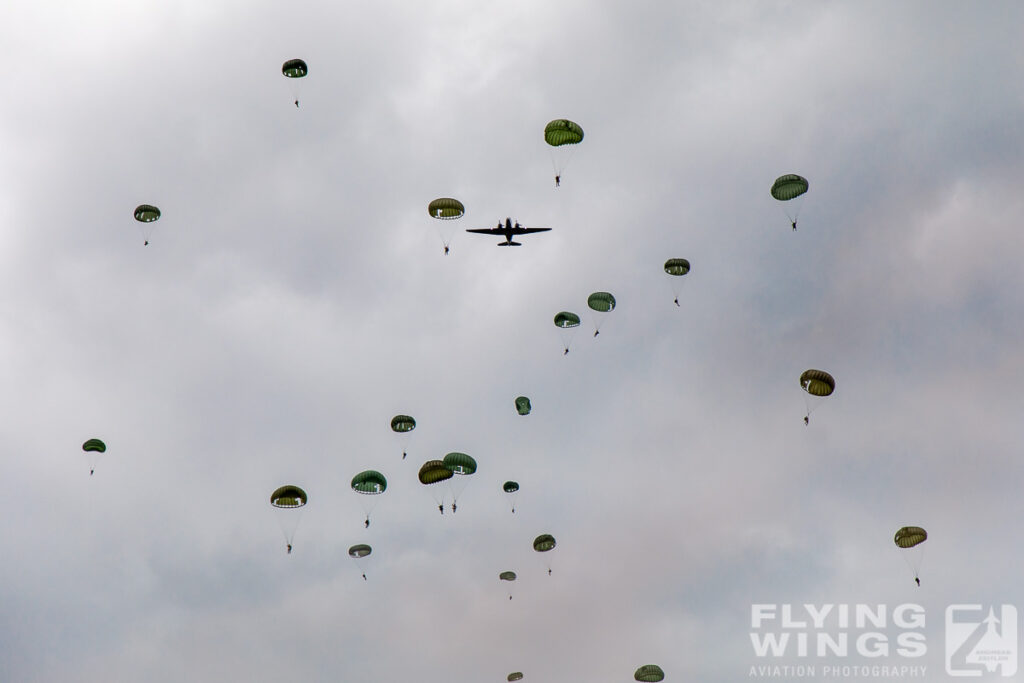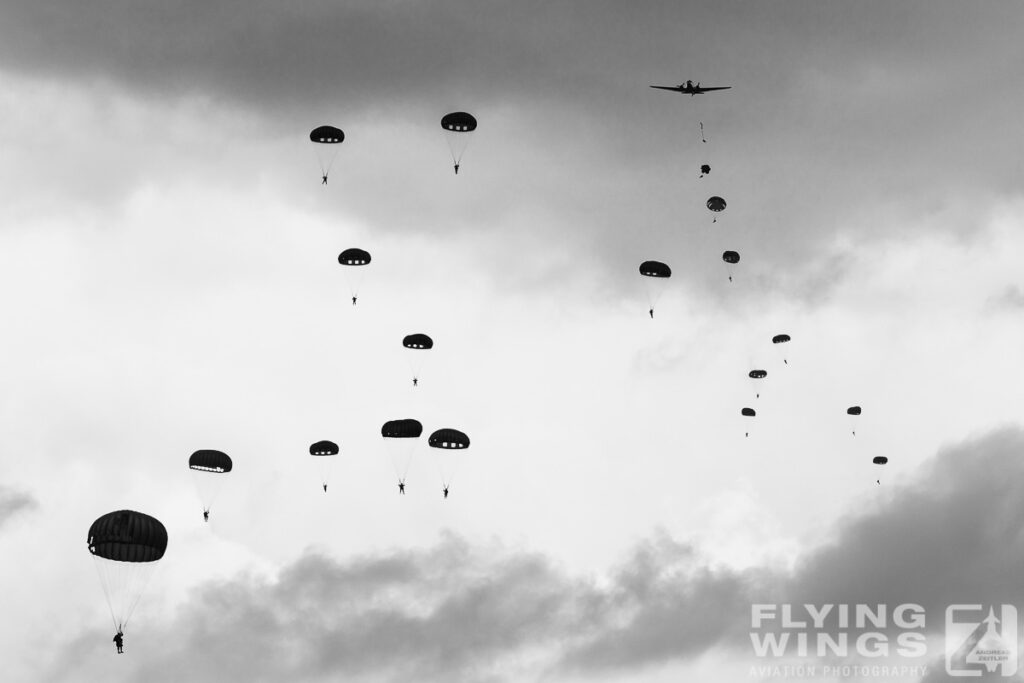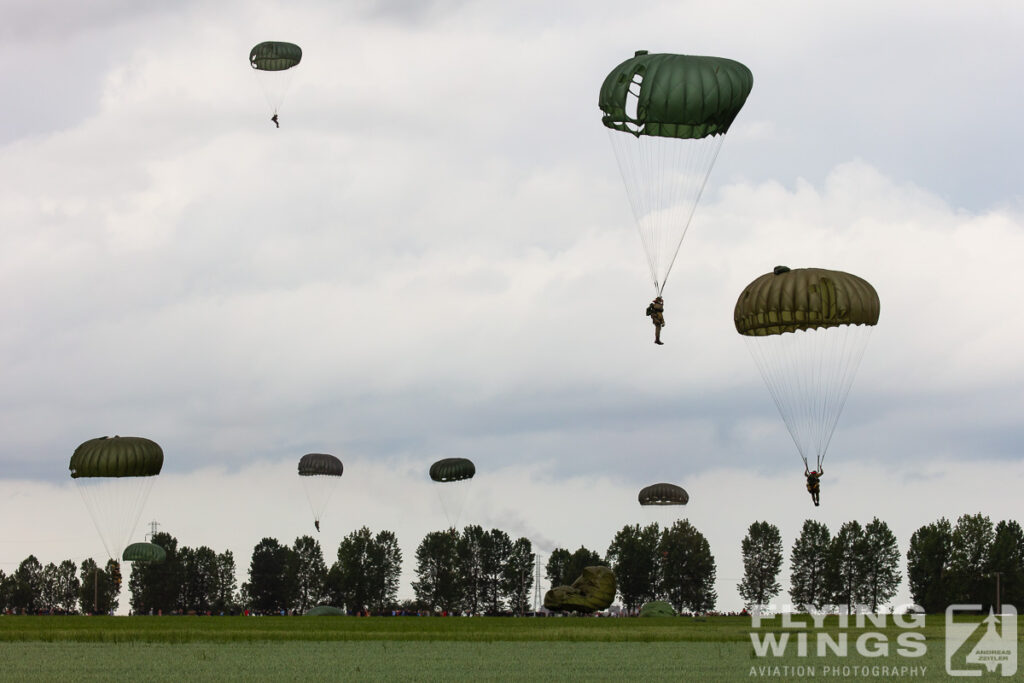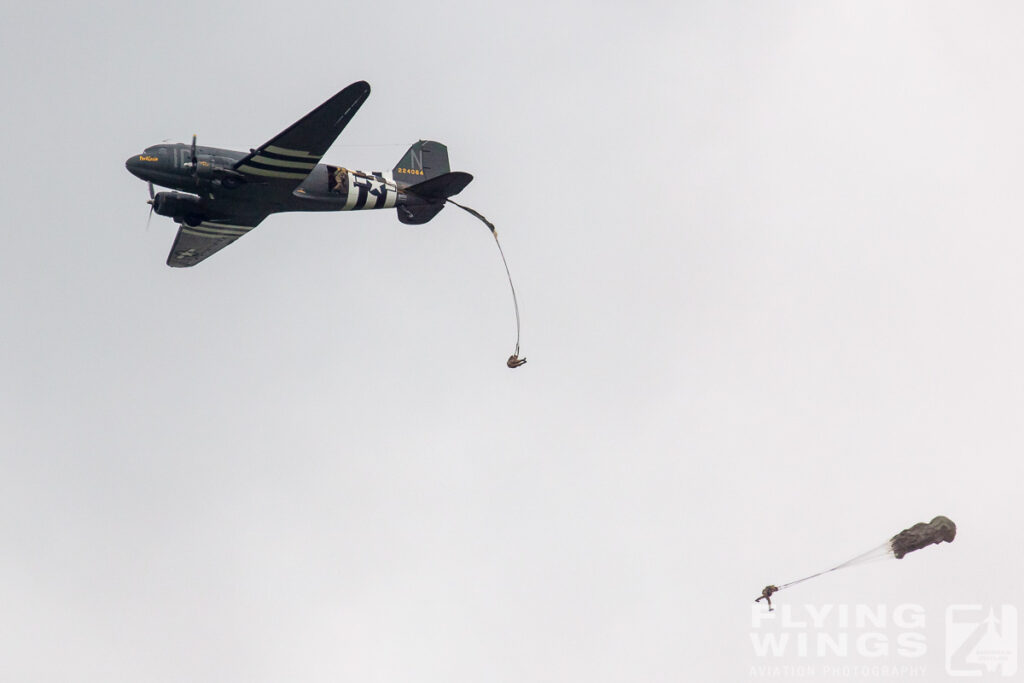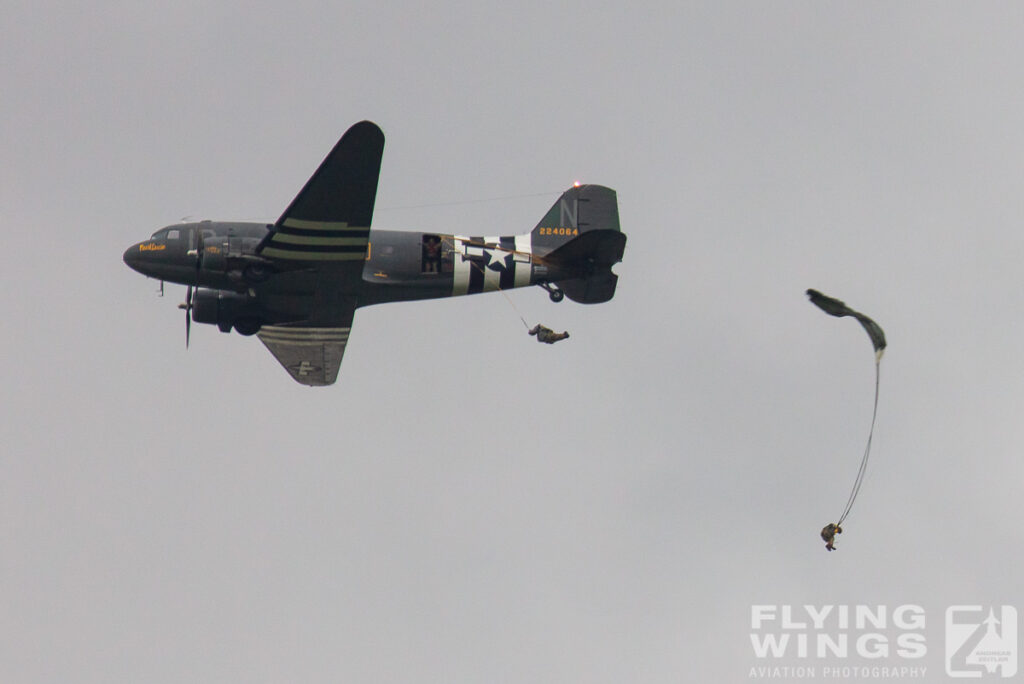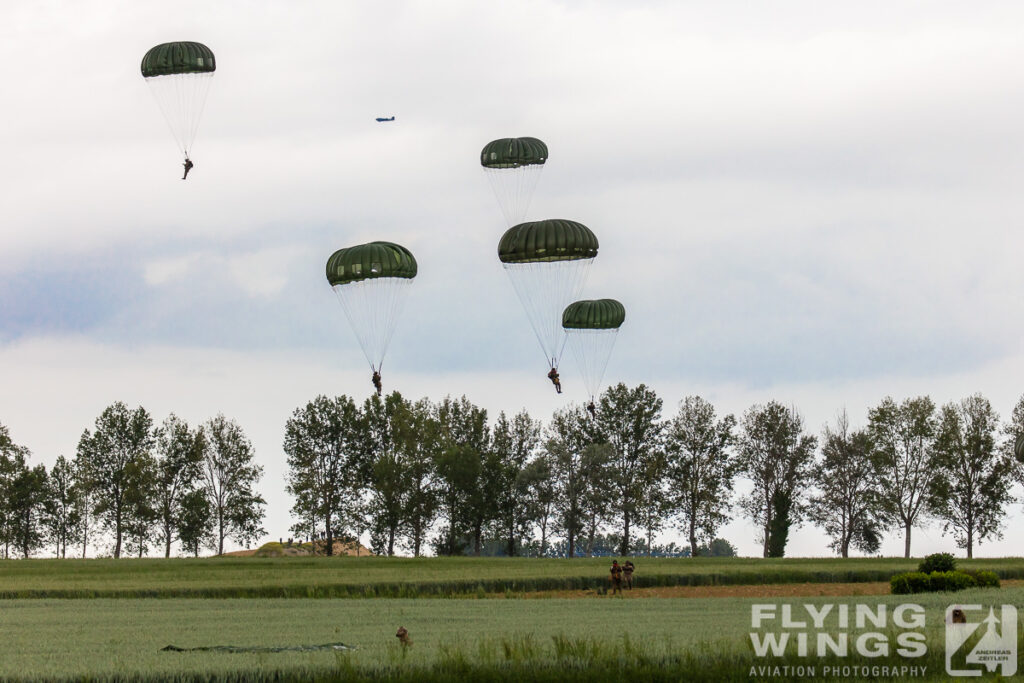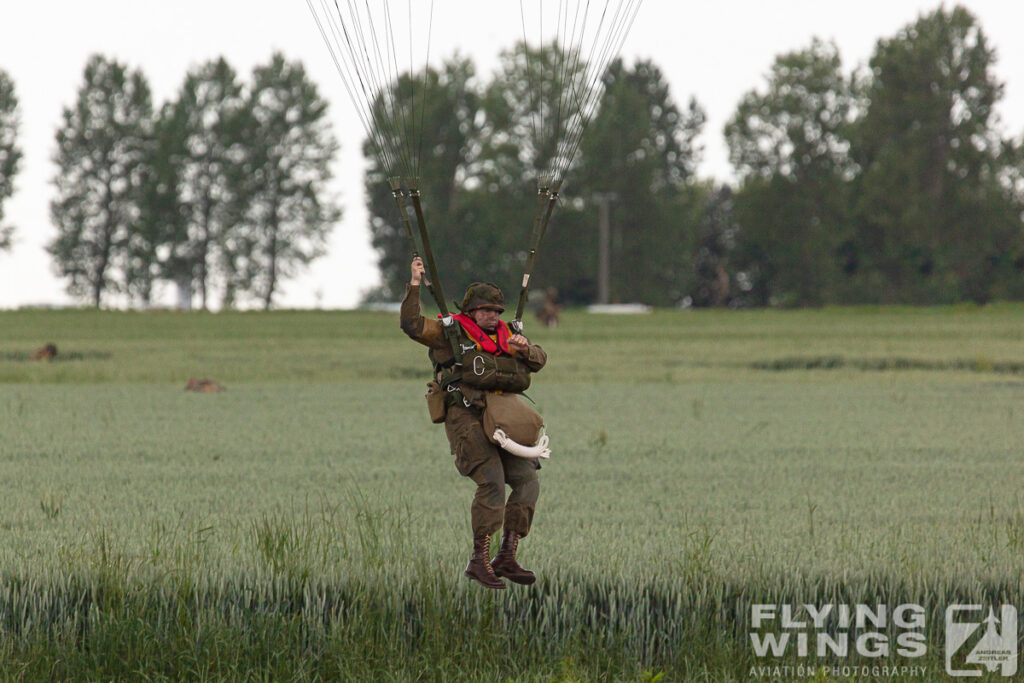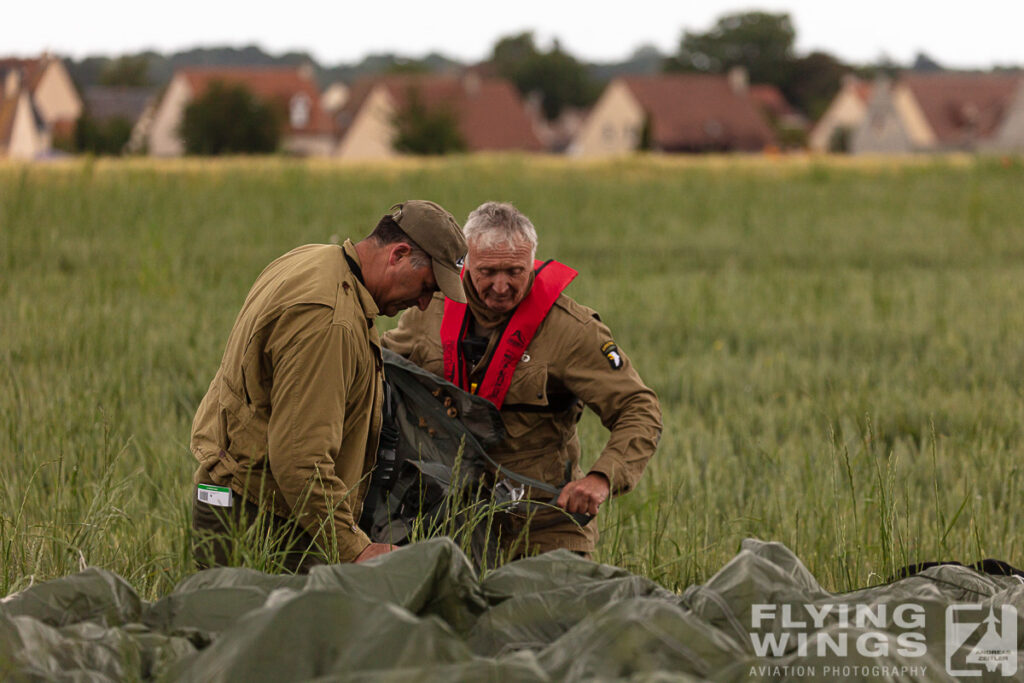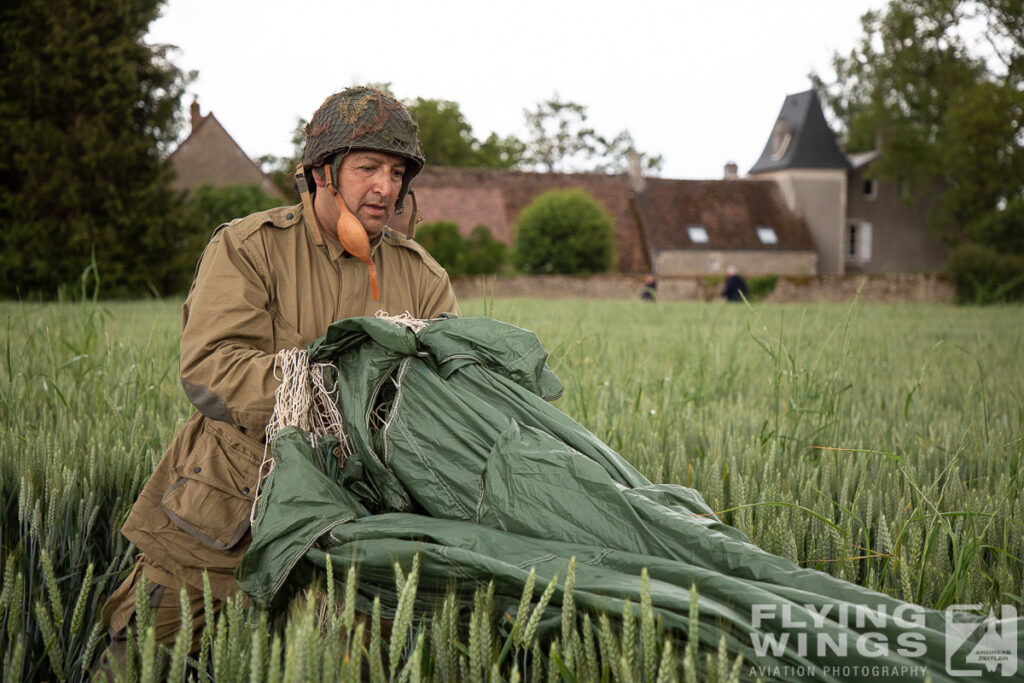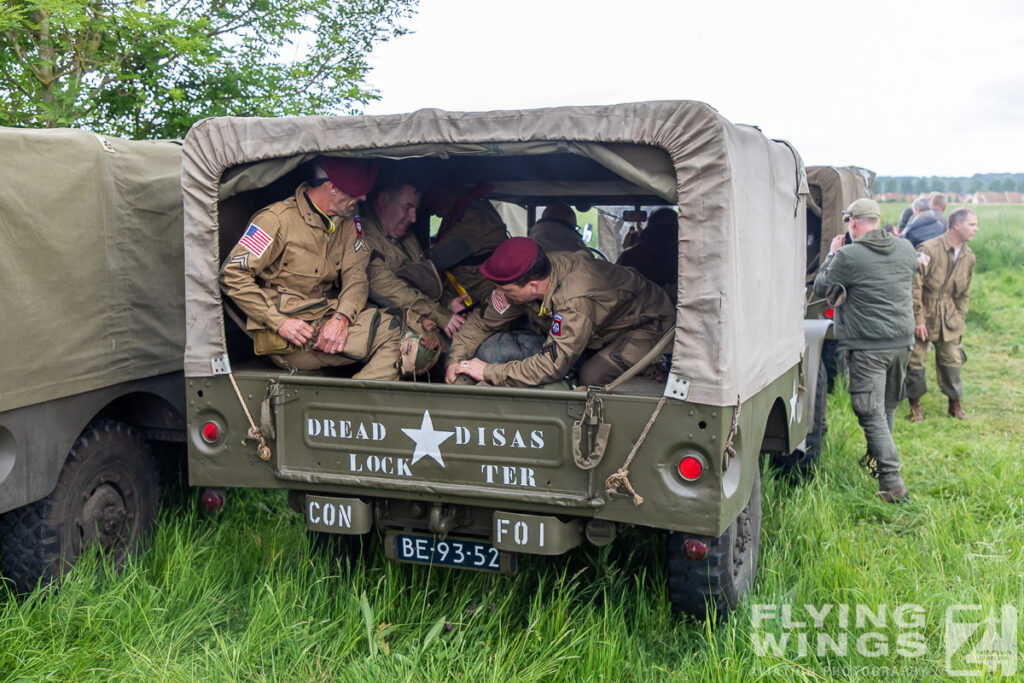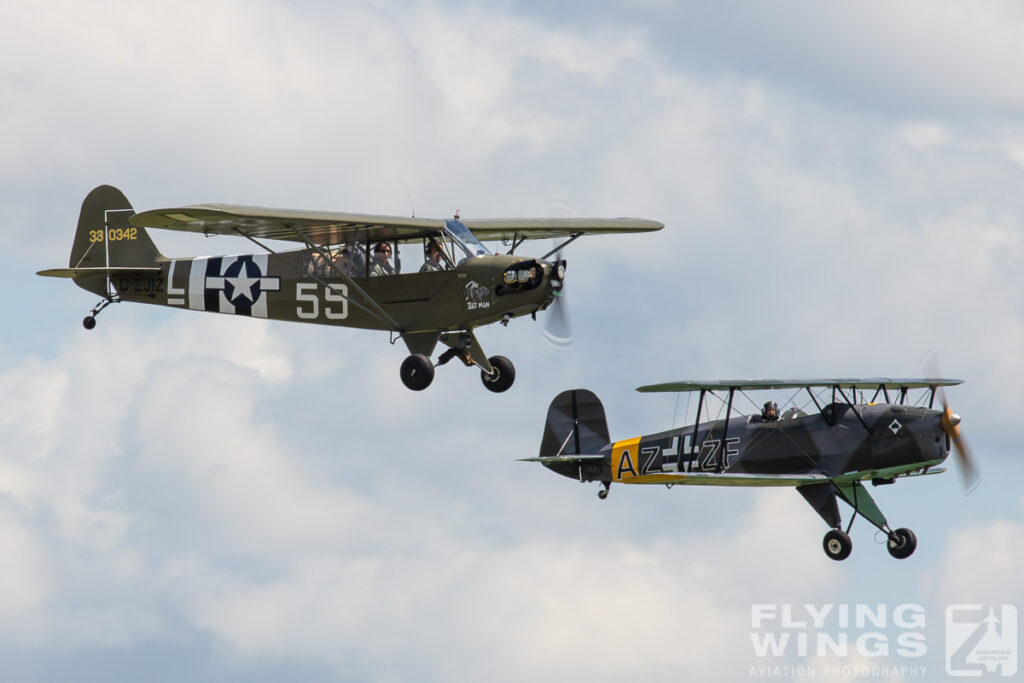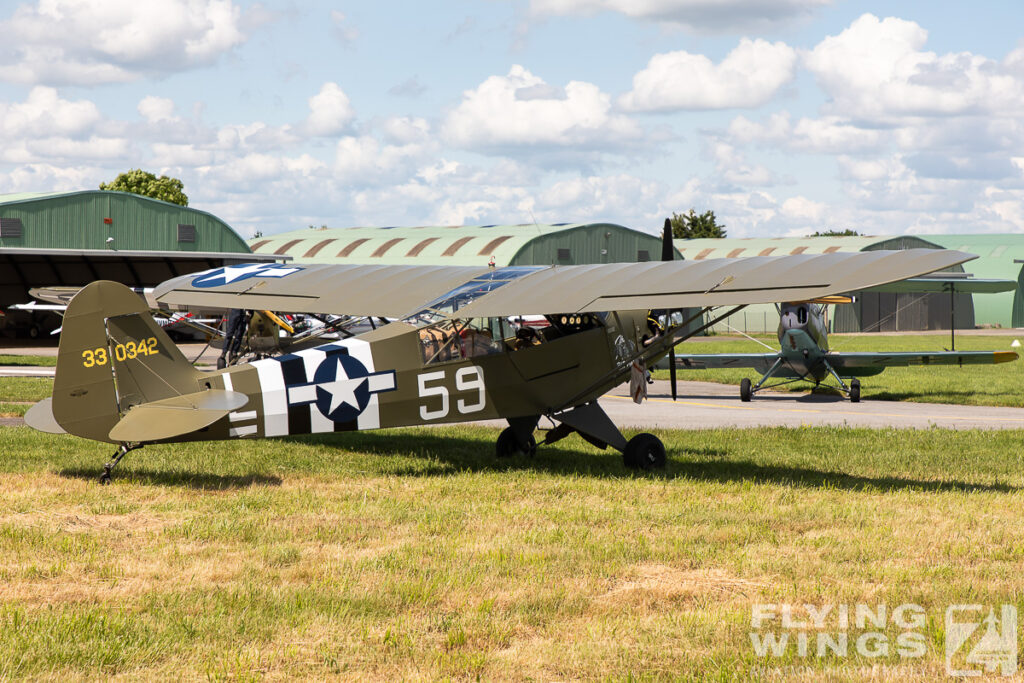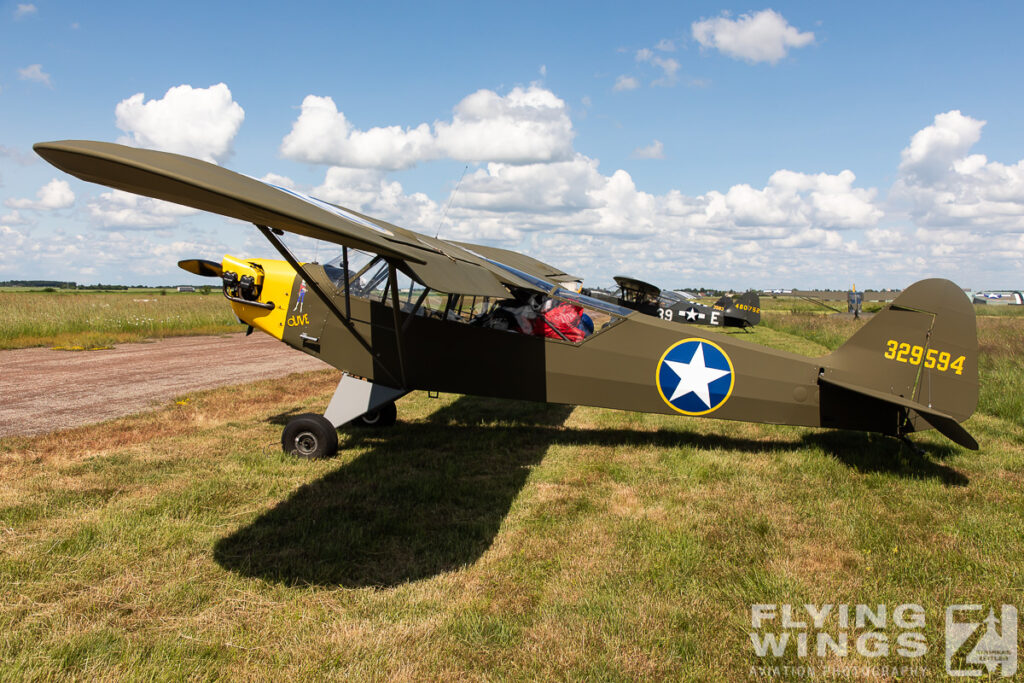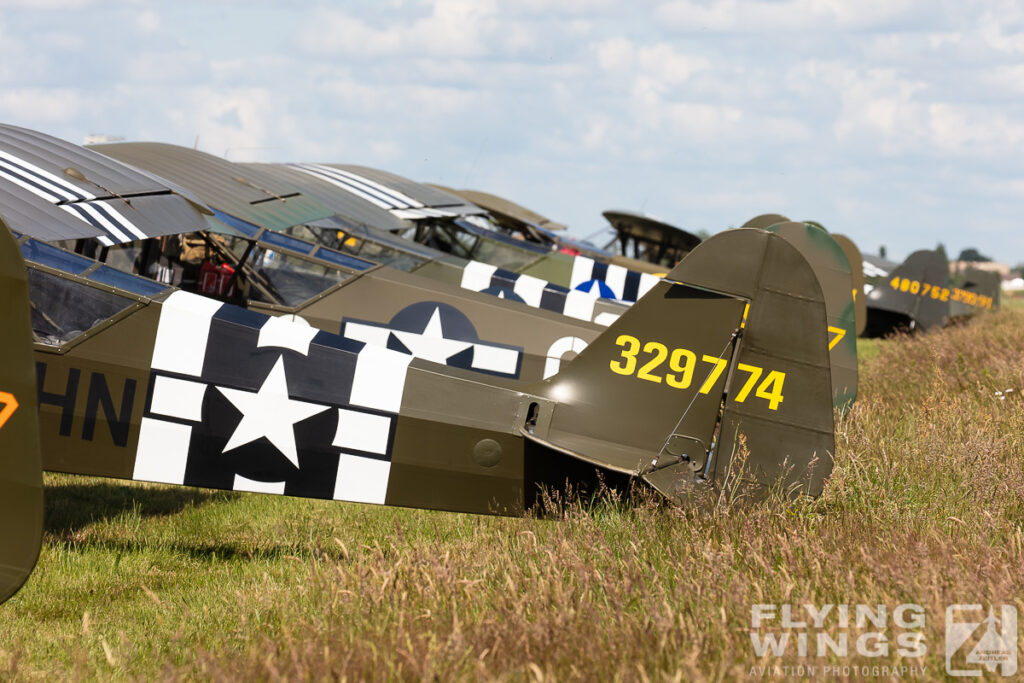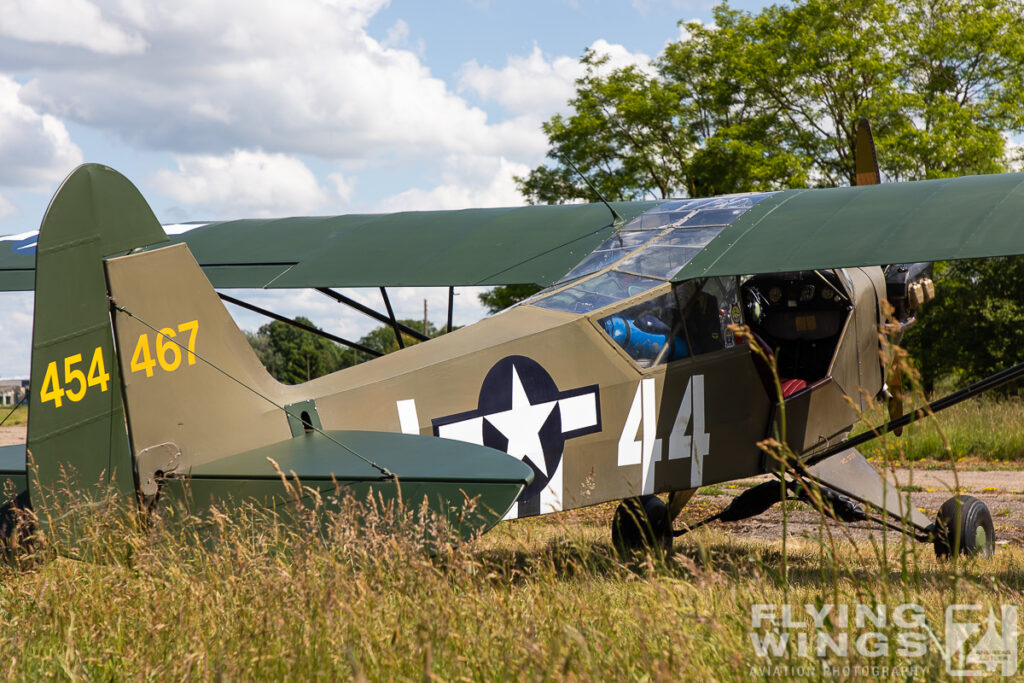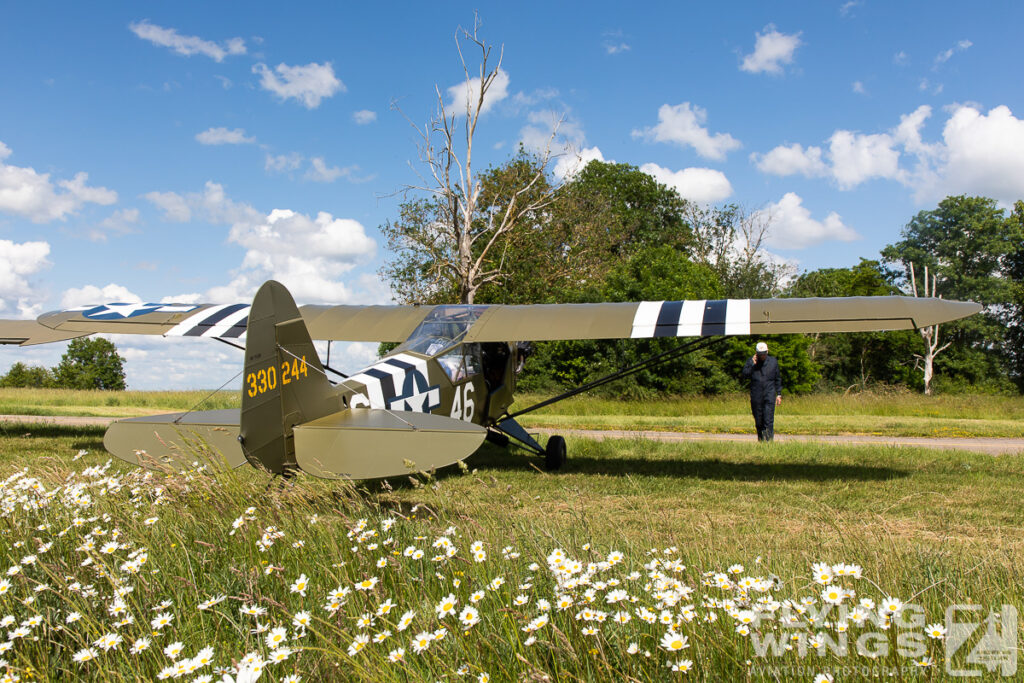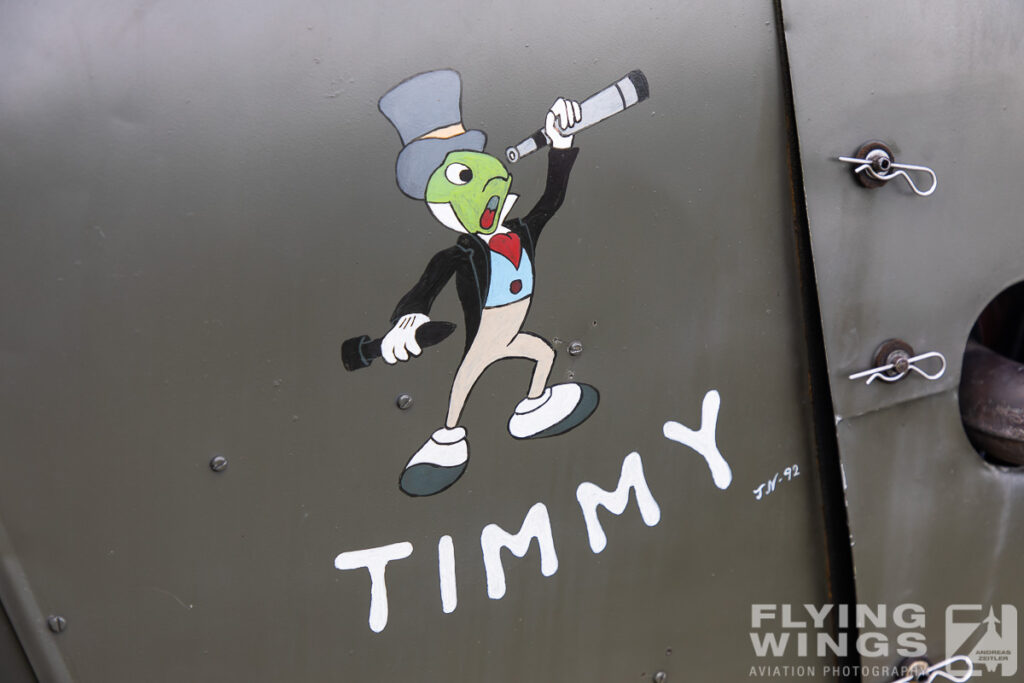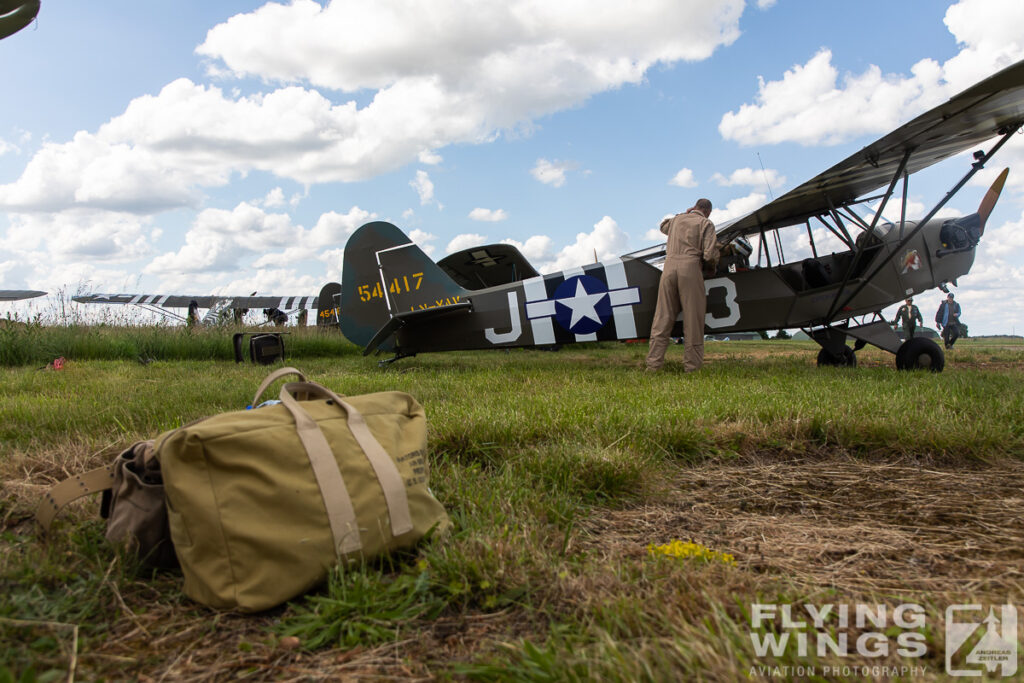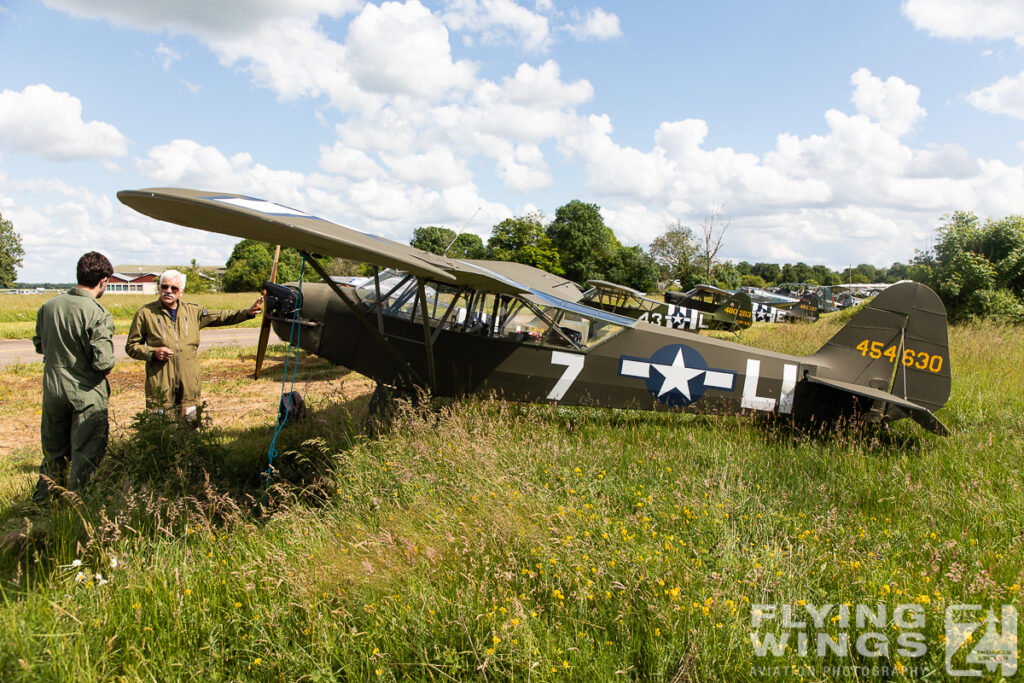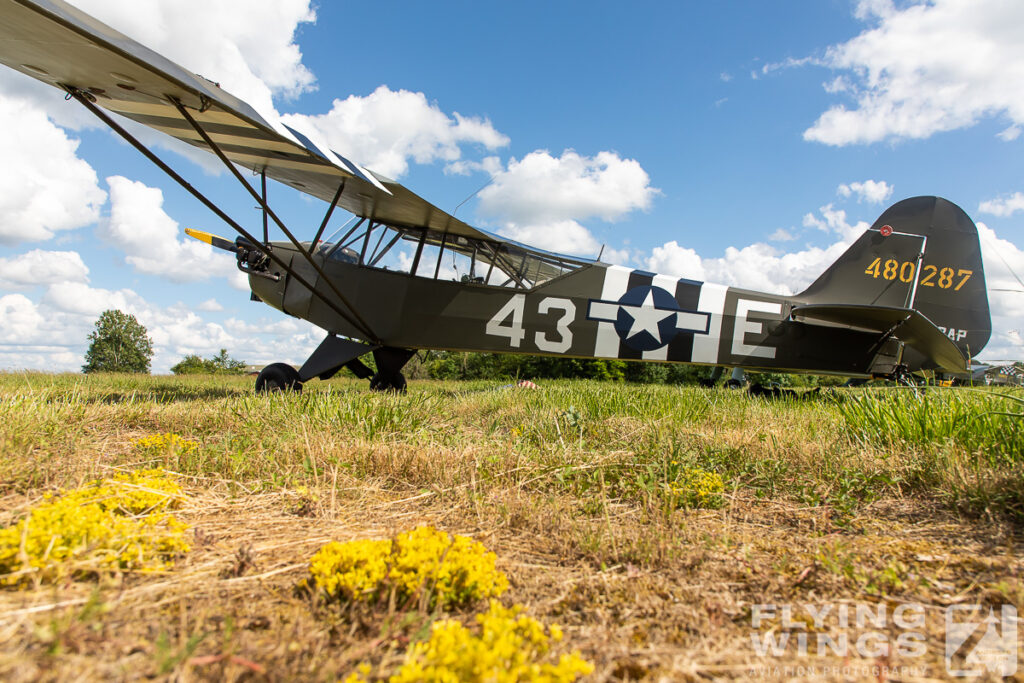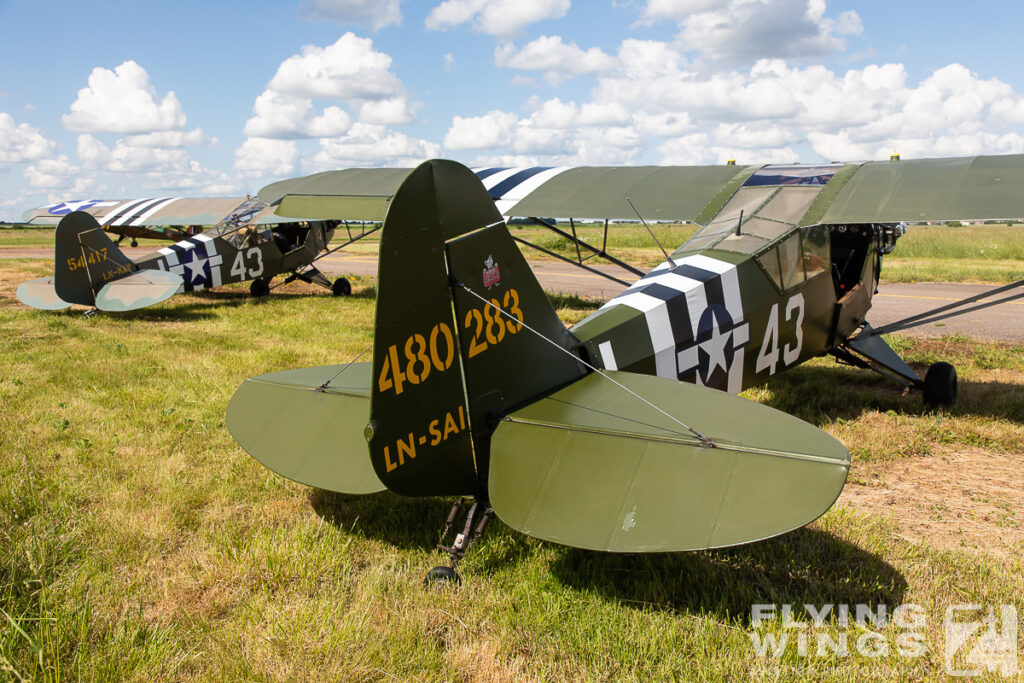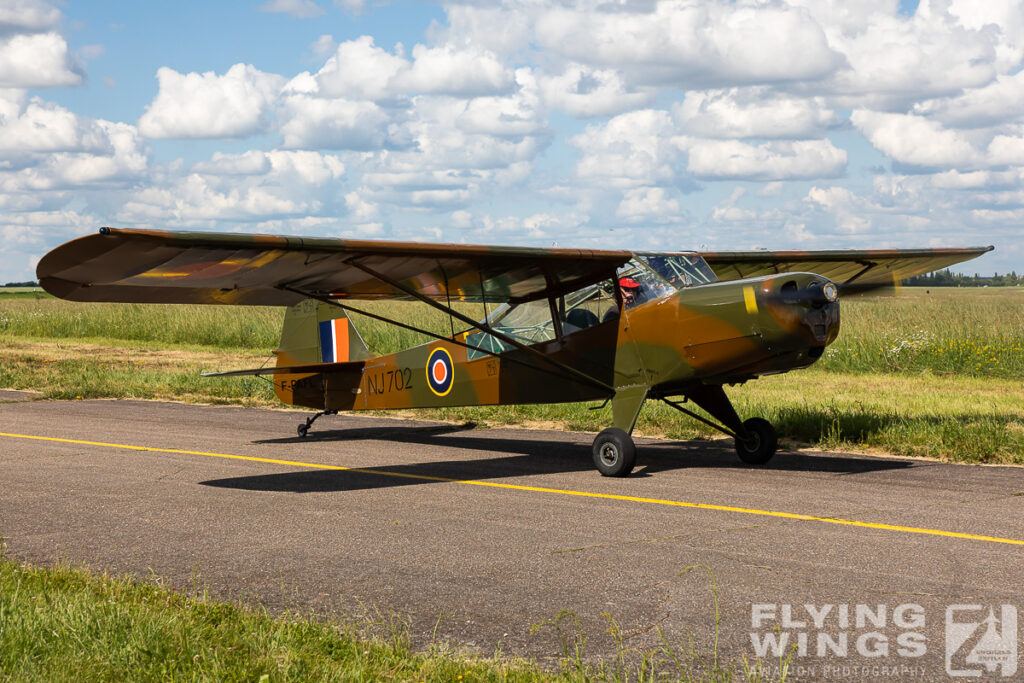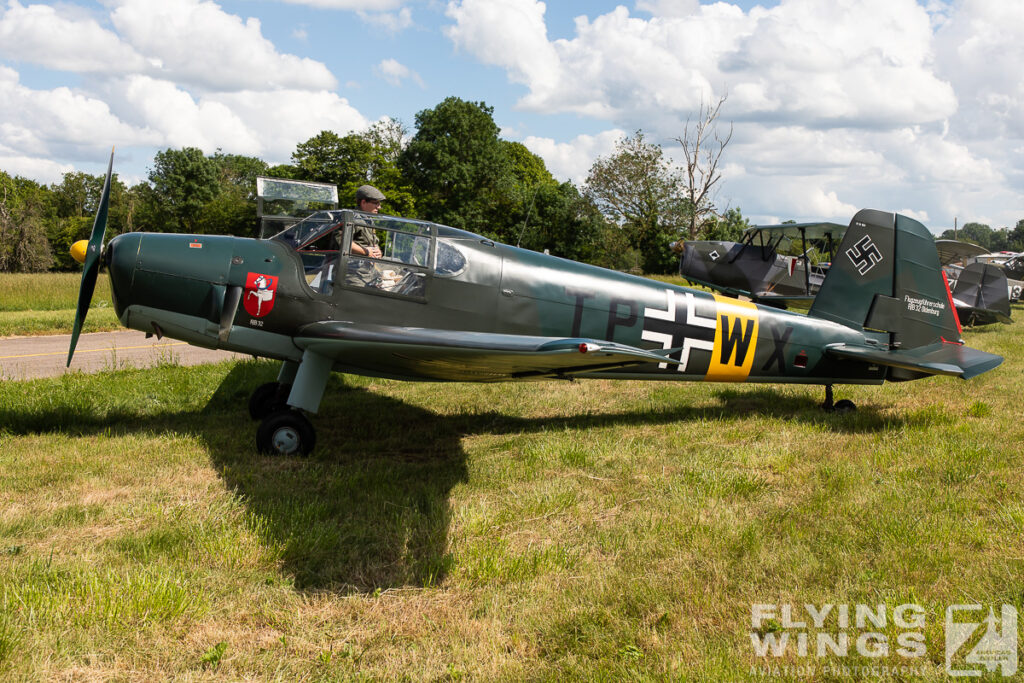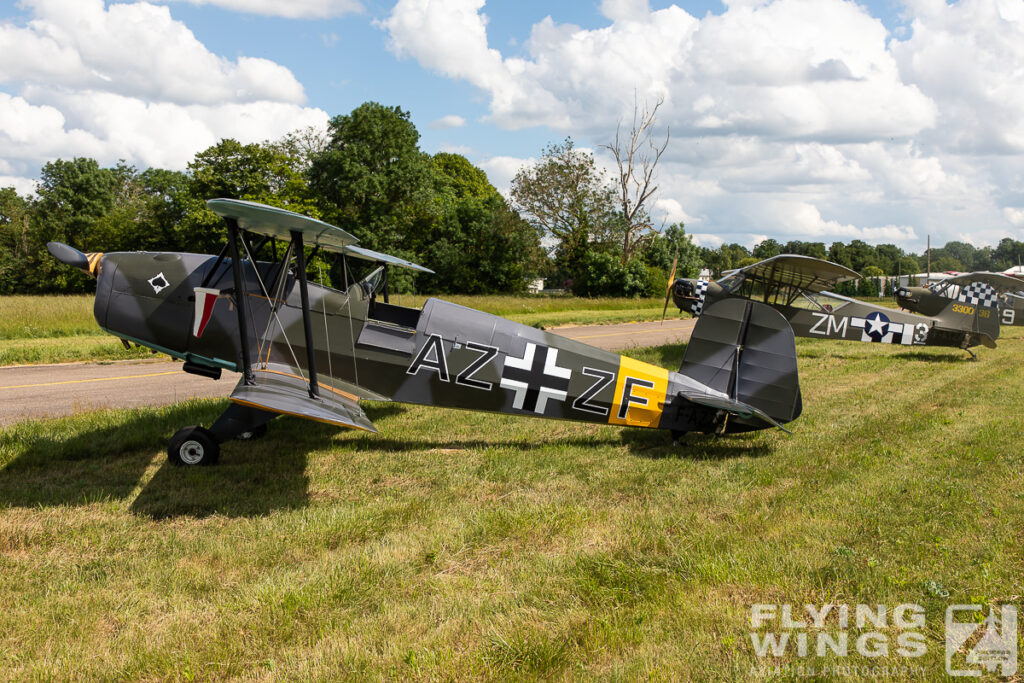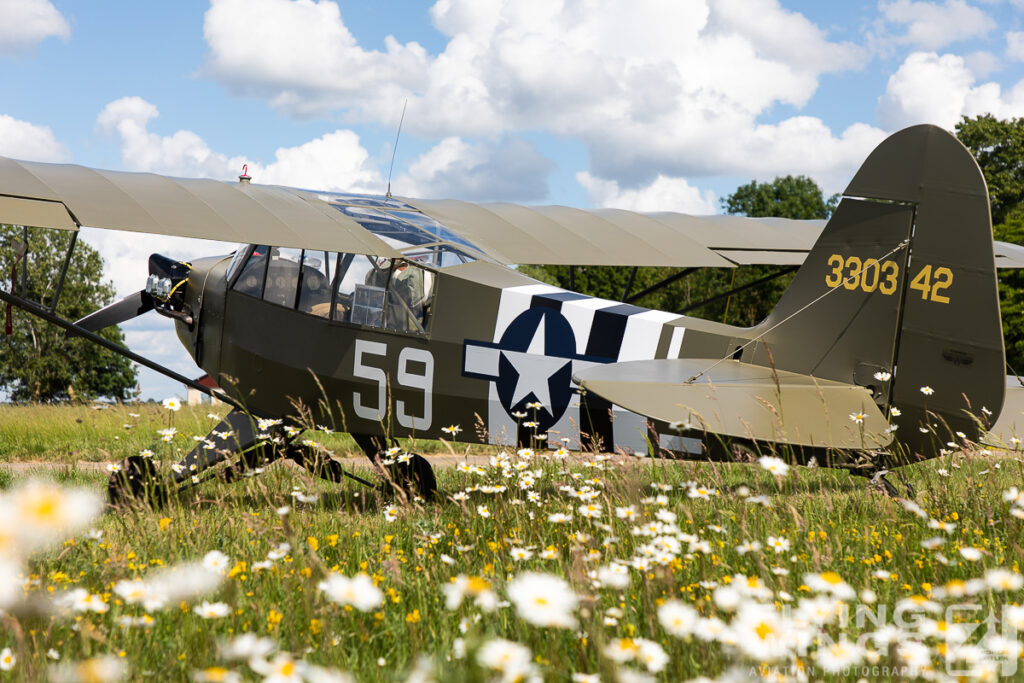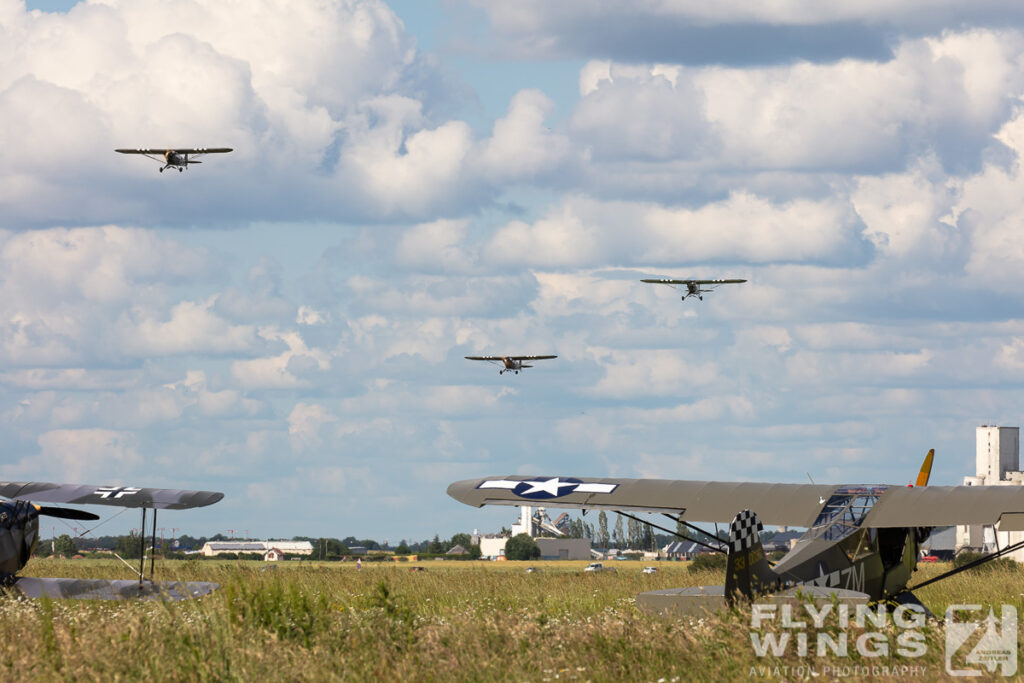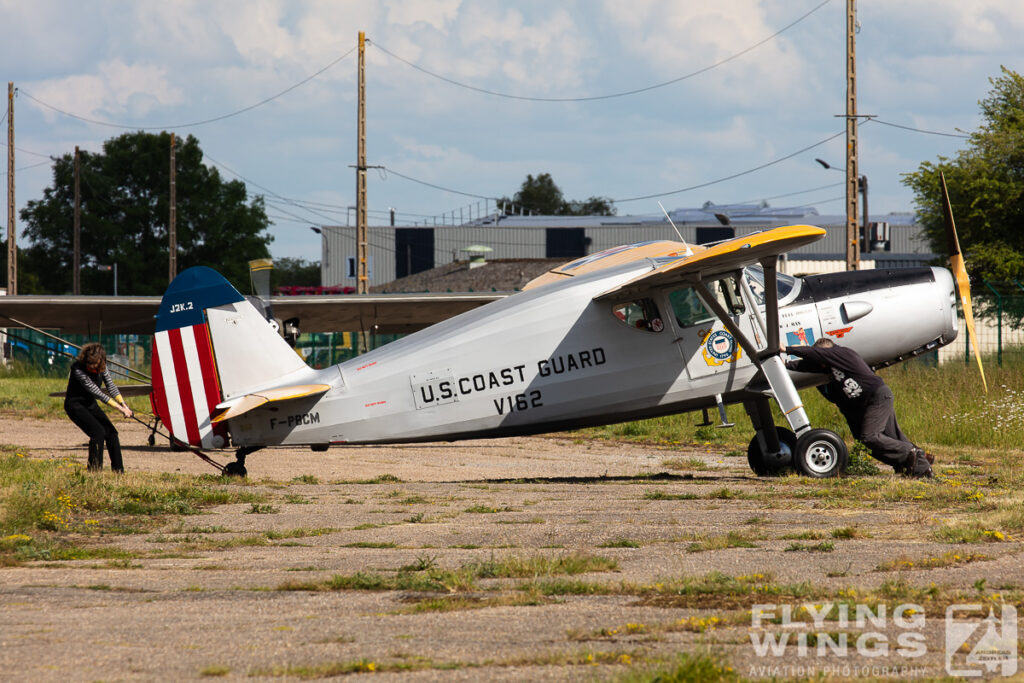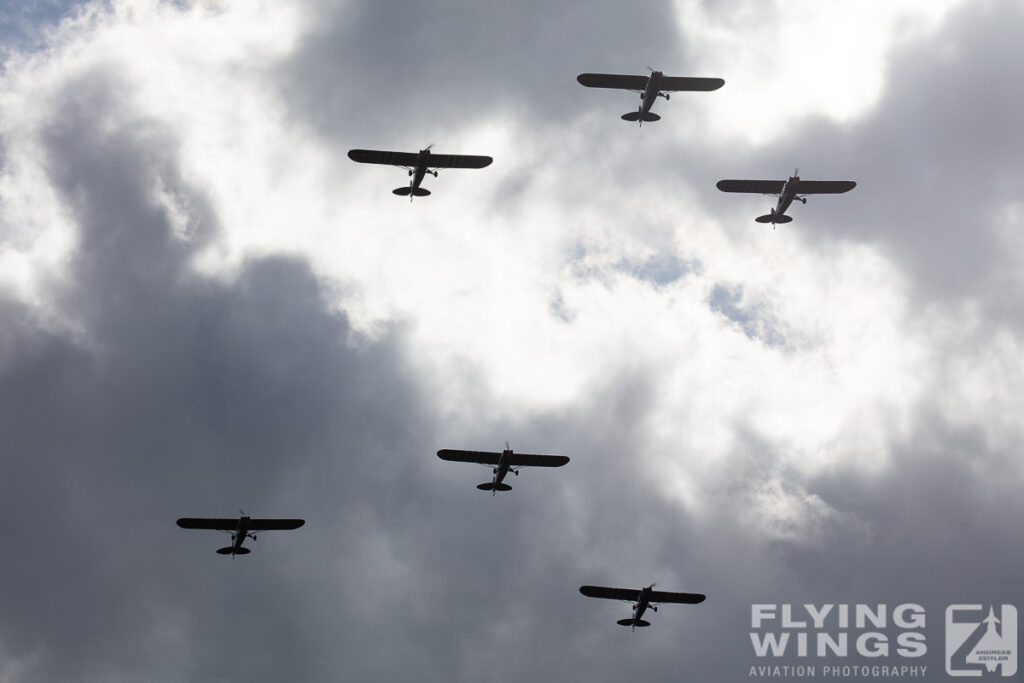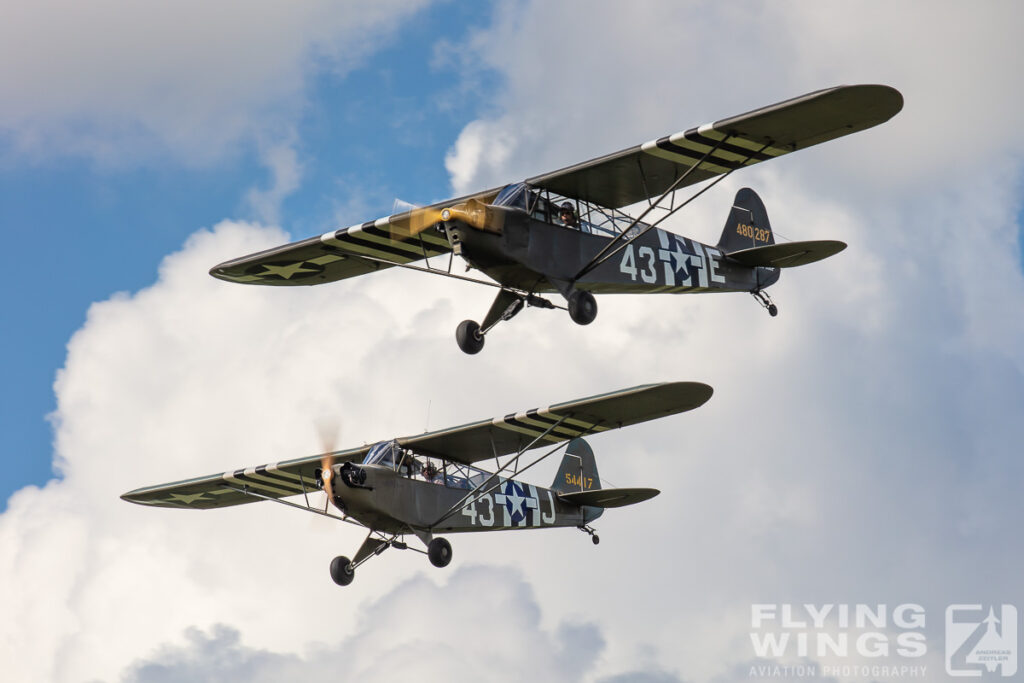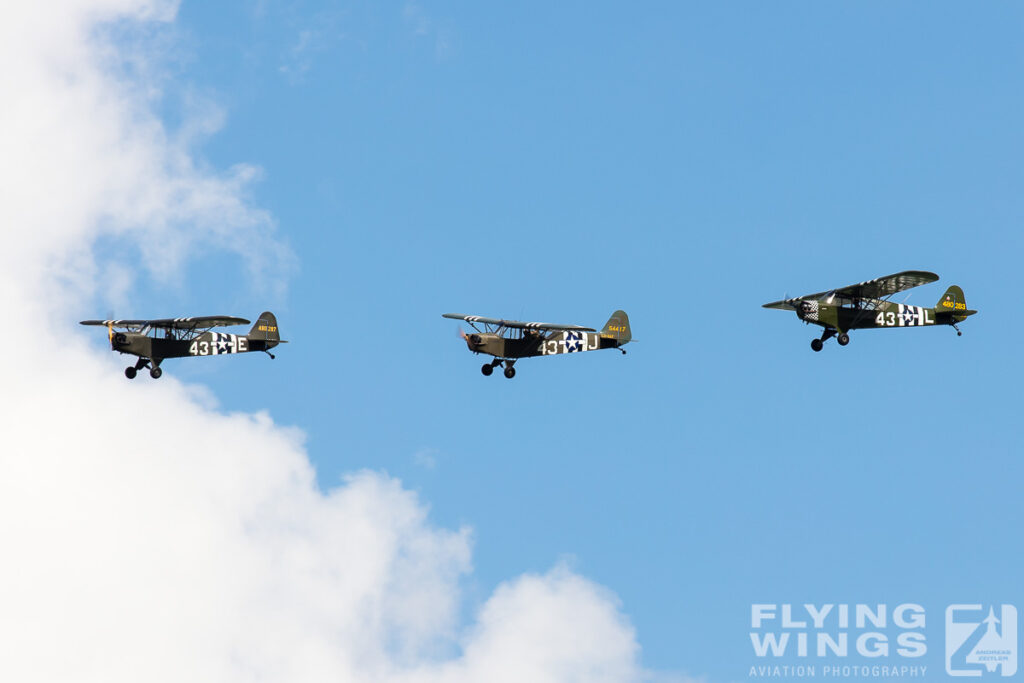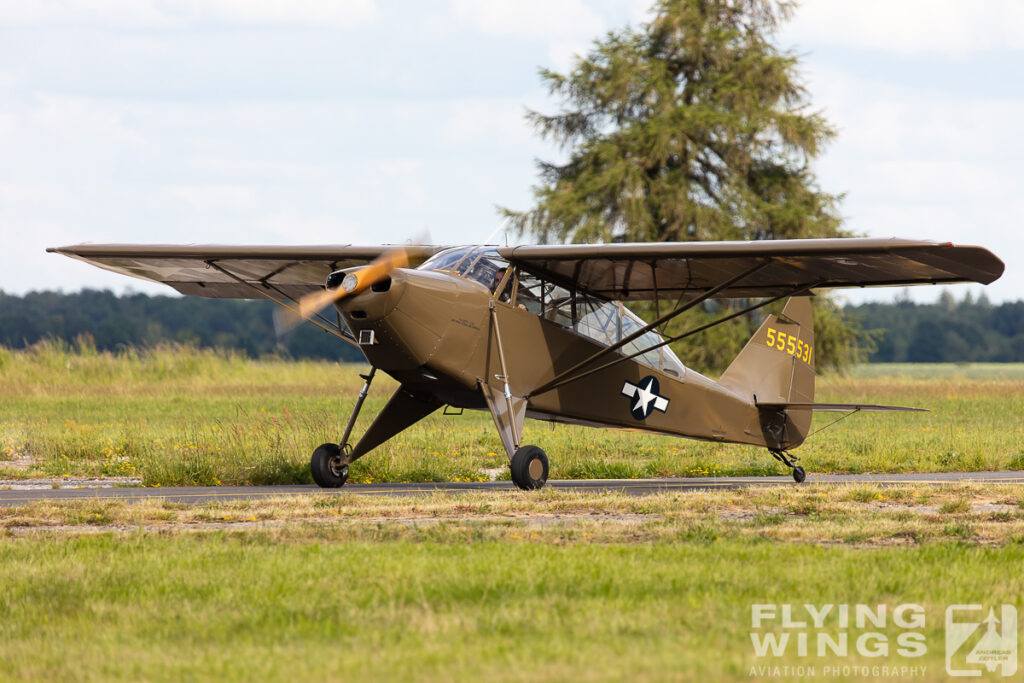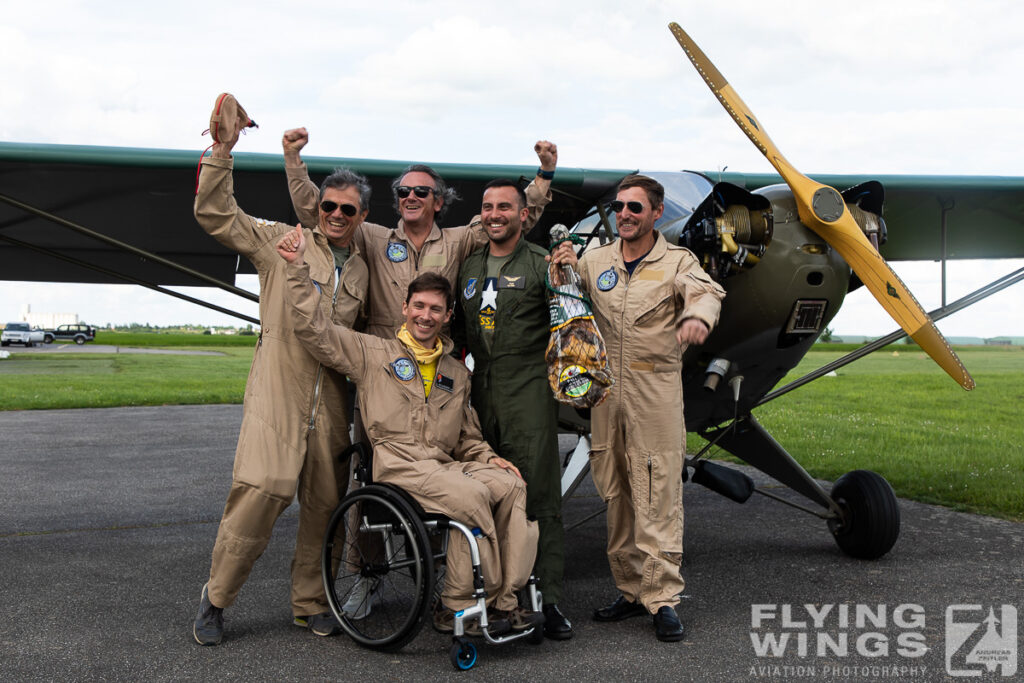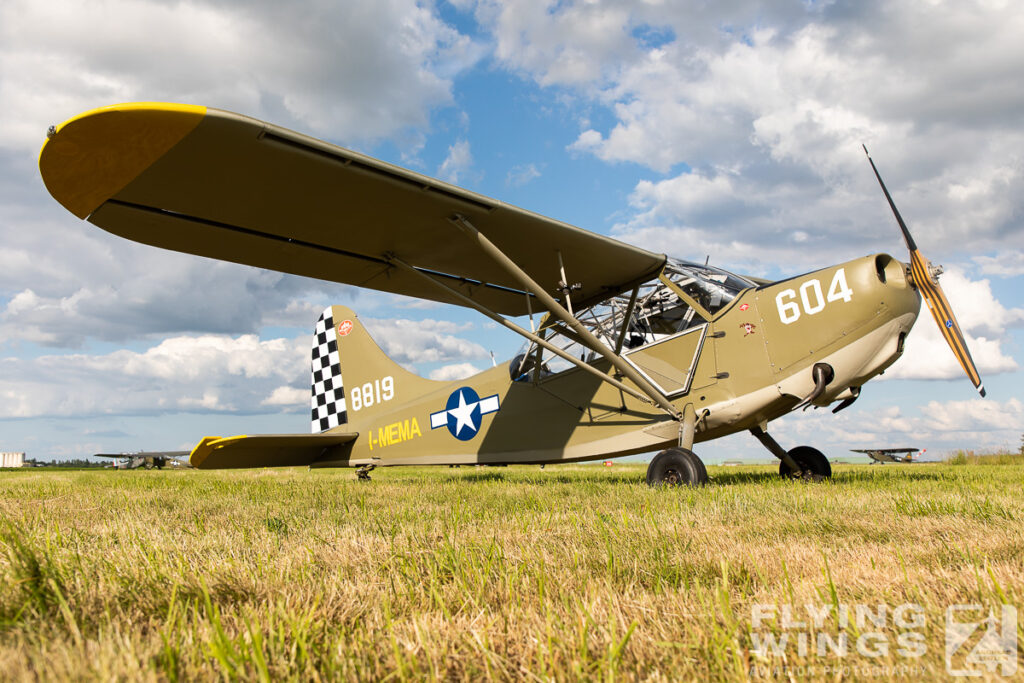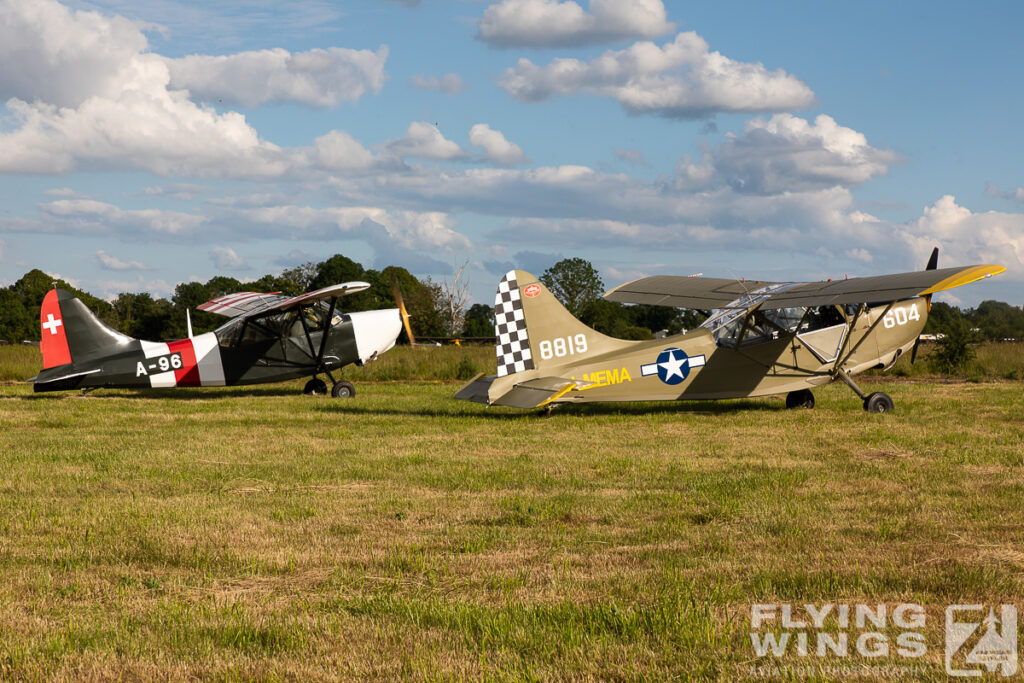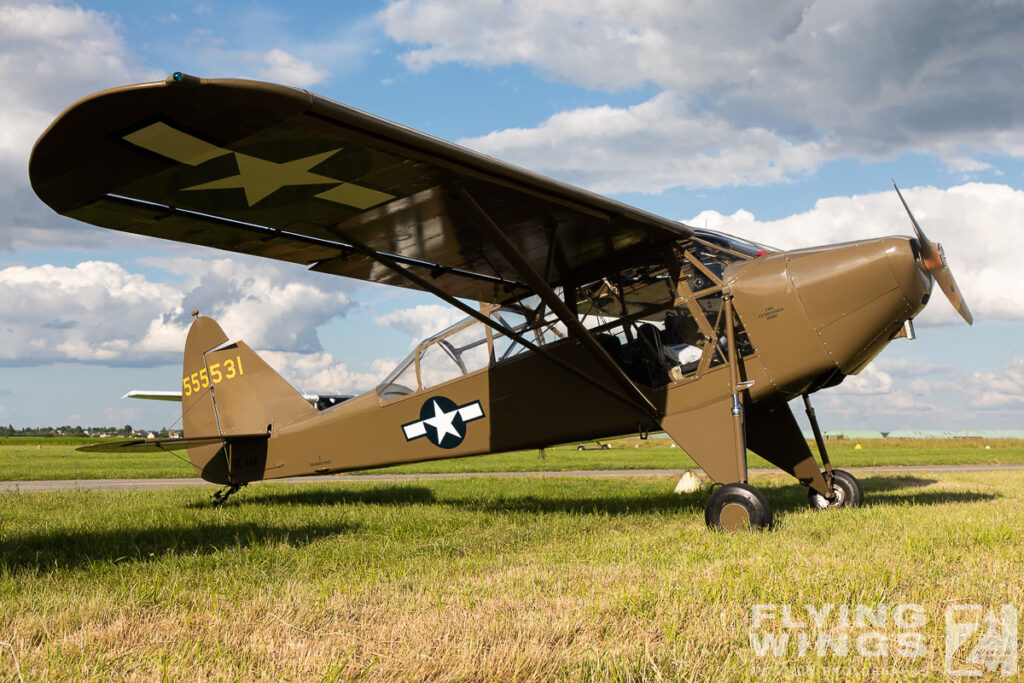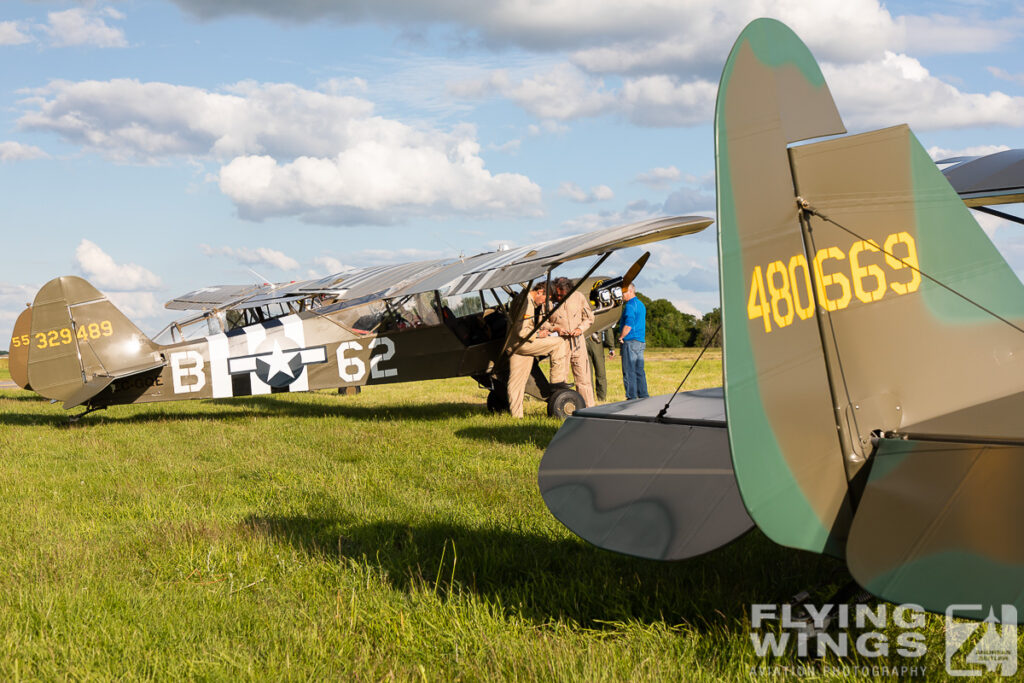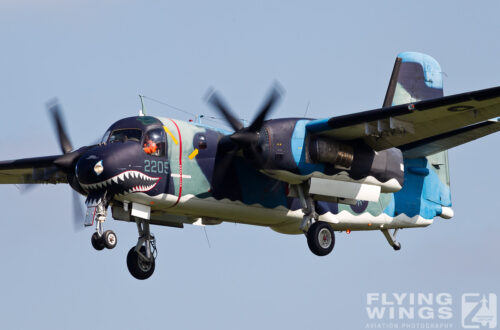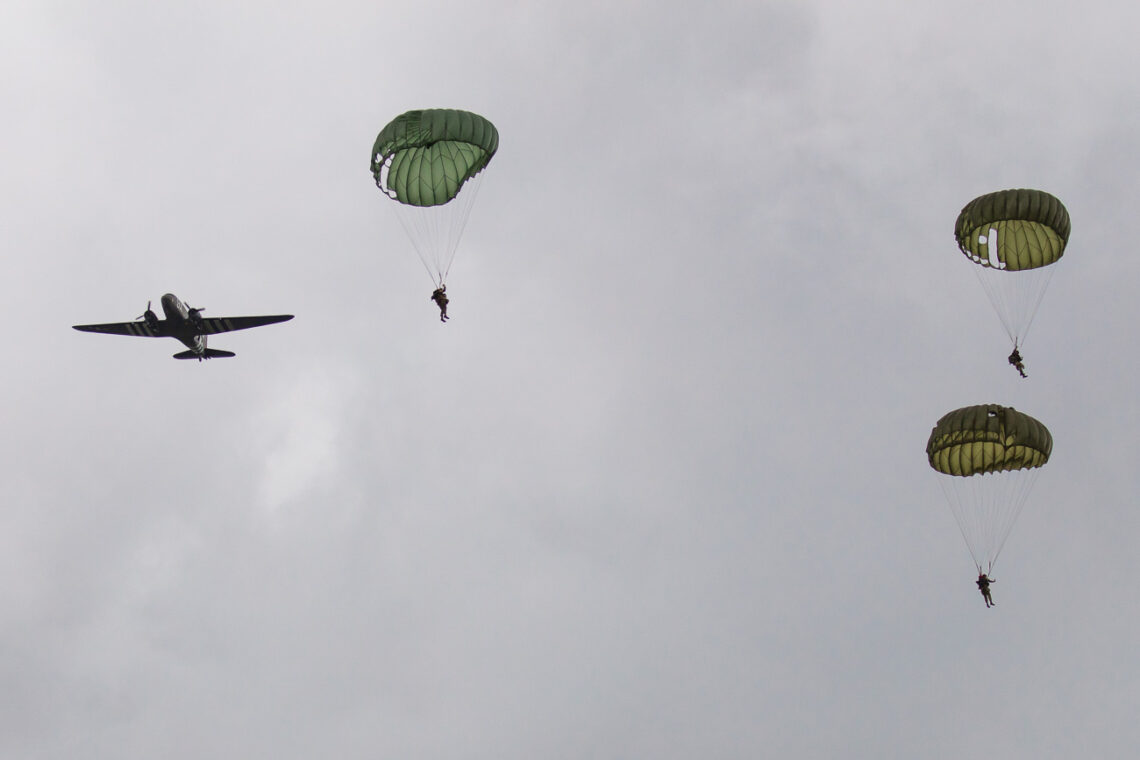
D-Day – 75th anniversary in Normandy
The 75th anniversary of D-Day in Normandy brought some highlights for the aviation enthusiast. Nearly two dozen Dakotas made their way from Duxford in England over the English Channel to the Caen region to drop parachutists over Northern France just as in the morning hours of 6 June 1944, and numerous L-Birds gathered at St. André de l’Eure, close to Evreux.
Where? Normandy, France
When? 05-06/06/2019
State of emergency in the Département Calvados and its capital Caen for the commemoration ceremonies for the 75th anniversary of D-Day in Normandy! Not only high-ranking politicians of the allied powers of the Second World War came to the beaches, which saw the embarkment of Allied forces into continental Europe 75 years ago. This event also aroused the interest of more than one million visitors, which easily doubled the number of inhabitants of this French region. Combined with numerous road closures, movement was rather restricted and challenging…
For the ceremonies of the Allied landing in Normandy 75 years ago a varied program was offered. While the French president Emmanuel Macron, the British Prime Minister Theresa May, German chancellor Angela Merkel as well as US President Donald visited the landing beaches on June 6th, the population saw hundreds of attractions along the 80km that make up the sectors that were called Utah, Omaha, Gold, Juno and Sword in 1944. This 75th anniversary of “Operation Overlord“ was in particular important as many of the veterans and contemporary witnesses are today around 90 years old. For many of them this might have been the last major anniversary to remember as well as the last possibility to visit those place where the largest landing operation of the military history happened.

Apart from the attractions on ground this 75th anniversary of D-Day also brought some highlights for the aviation enthusiast, in particular the Douglas DC-3 Dakota and its military variants such as the C-47. Hundreds of those aircraft set of 13,000 parachutists over Northern France in the morning hours of 6 June 1944. For this 75th anniversary nevertheless nearly two dozen Dakotas made their way from Duxford in England over the English Channel to the Caen region in Normandy.
Fly-In of the D-Day Squadron Dakotas
„The D-Day Squadron“ of the Commemorative Air Force (CAF), united 15 American DC-3s and Dakotas and formed the majority of this impressive fleet. Just as more than 75 years ago these aircraft followed the Blue Spruce route in order to cross the Atlantic Ocean. Flying via Goose Bay in Newfoundland; Narsarsuaq in Greenland, the Icelandic capital of Reykjavik and finally via Prestwick in Scotland they made their way to Duxford. Flying in airplanes that even also participated in WW II!
Days before 6th June the largest accumulation of Dakotas in Europe during the last decades was already celebrated. More of the European DC-3s and Dakotas joined their sisters of the D-Day Squadron. This resulted in an impressive gathering of 23 aircraft of this type.
Just as 75 years ago, the weather delayed the planned air operation and the crossing of the Channel also in this anniversary year. It were no days, but hours. However, the Dakotas could only cross the Channel in the late afternoon. This event took already place on 5th June, thus one day before the actual D-Day. This was due to the fact that the airspace was closed on actual D-Day due to the celebrations taking place, and in particular due to the presence of the American President.
The highlight of the Channel crossing for the Dakota formation was to set off approximately 350 parachutists close to Sannerville in the east of Caen. In this „Drop Zone K“ the paratroopers of the 6th Airborne Division jumped off and encountered the 6th company of Panzergrenadier-Regiment 125 of the 21. Panzer-Division. The fierce battle that followed and which ended with the liberation of Sannerville, lastet for 12 long days.
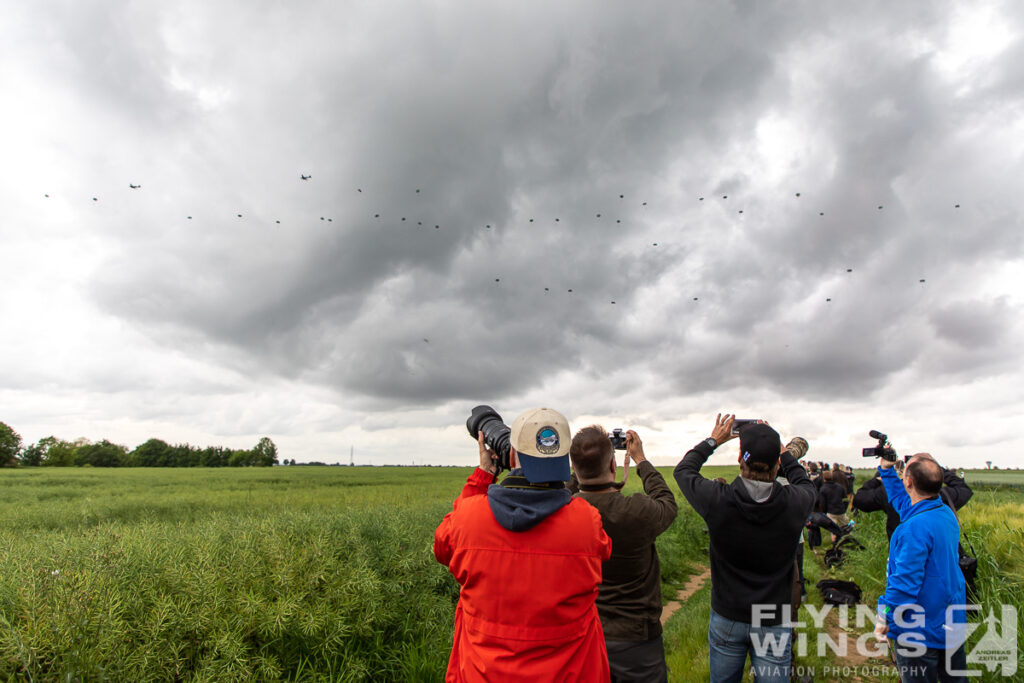
In 2019 the jumpers were greeted by an enthusiastic audience, which partly waited already since the early morning hours to watch this spectacle.
To set off the parachutists about half of the aircraft were used, and parachutists jumped during serval overflights, which from the ground seemed somehow unordered. The aircraft had to fly plenty of several circles, until all jumpers had left their airplanes. Due to the winds, these brave men landed then also not only on the meadow in front of the spectators, but also in surrounding grain fields or home’s front gardens.
On 7 and 8 June the Dakotas could be visited at the Caen Carpiquet airport. However, not only did the weather literally wipe this out, but also did the organization not really contribute that this event became a success. Shuttle buses from the public parking lots to the event were scarce and uncoordinated, the aircraft were parked too far away from the spectators, and necessary facilities were not available. After all, this not worth attending and in strong contrast to the event at Duxford only few days before.
L-Birds return to Normandy
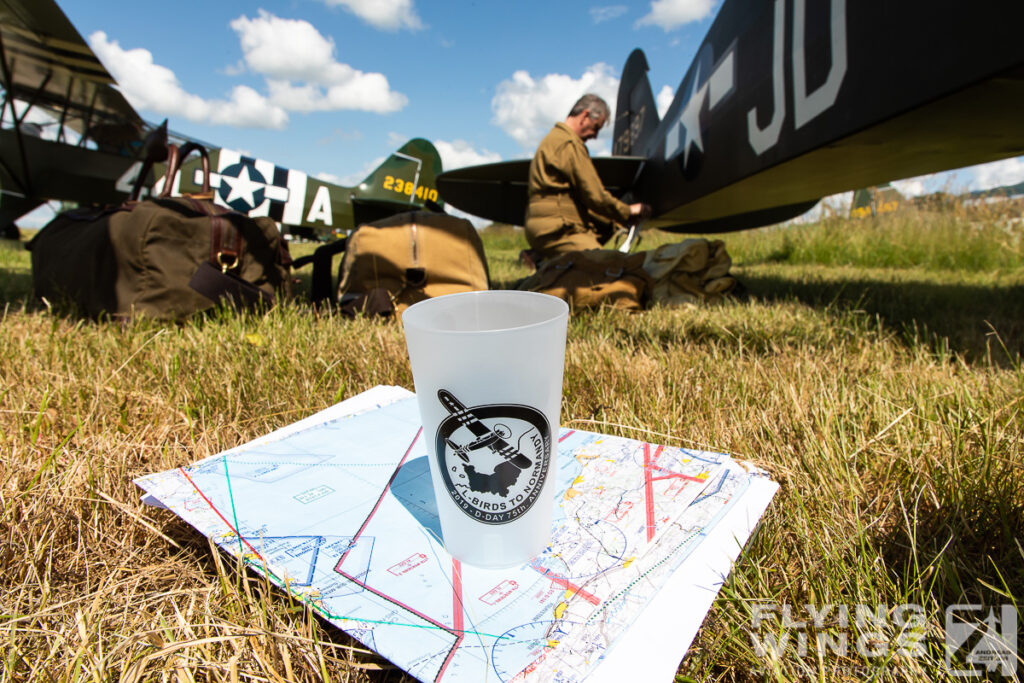
A more idyllic and more relaxed event to dwell into the aviation aspect of D-Day was organized further South, at St. André de l’Eure, close to Evreux. Proverbially in the shade of the large Dakotas in Caen the L-Birds – L being the designation for American liaison aircraft – met.
These small aircraft took the indispensable tasks of transport duties and were also used for aerial reconnaissance. They were used to search for ground targets and to direct the firepower of ground-based artillery and warships on them. Also those tiny planes were the first allied aircraft that landed in Normandy. Using improvised auxiliary tanks, which were fastened behind the pilots, they had the necessary range to cross the British Channel. So a group of five Piper L-4 and a Stinson L-5 made their way from England to France, where they touched down in St. Martin in close proximity to Utah Beach.
Usually the L-Birds made their way to France via the sea, and then had to be assembled and made ready to fly on the landing beaches, all under hostile bombardment which made the job of the mechanics and pilots not easier.
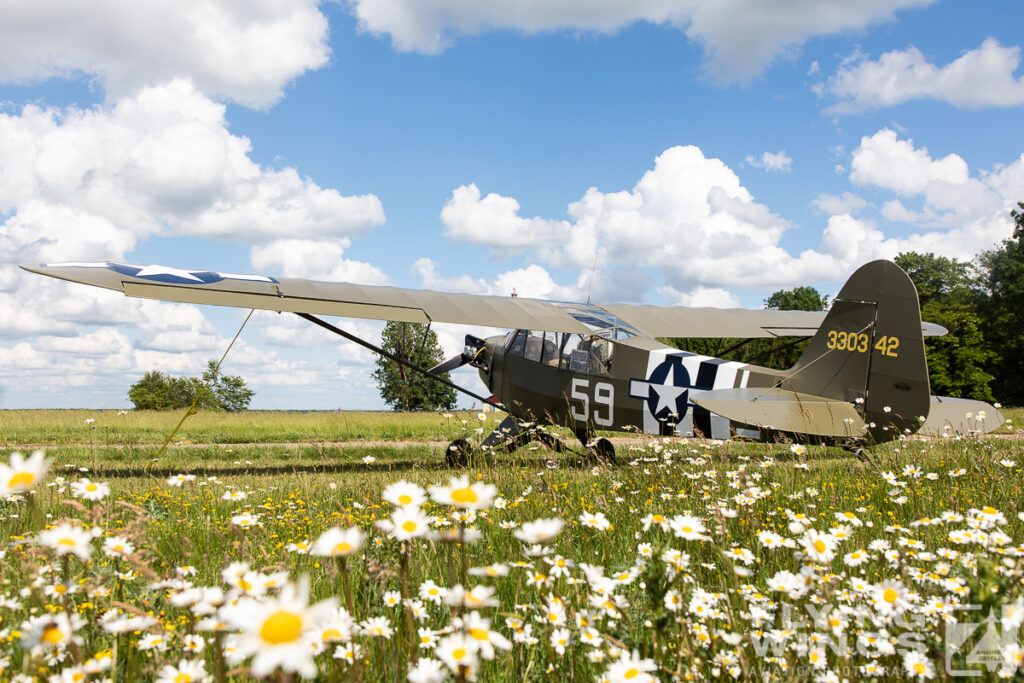
To remember the important role of those „L-Birds“ the event at St. André was organized by a group of enthusiasts and called „L-Birds backs to Normandy “. Many types such as the Aeronca L-3, Piper L-4 Stinson L-5 or also the world’s only flying Piper L-14 followed the invitation to Northern France and flew in from all over Europe, even from such distant places as Switzerland or Spain.
The next big anniversary of D-Day will be the 80th anniversary in 2024. Let’s see what events will be scheduled by then.
Aviation Celebration of D-Day in Normandy – Photo Gallery


